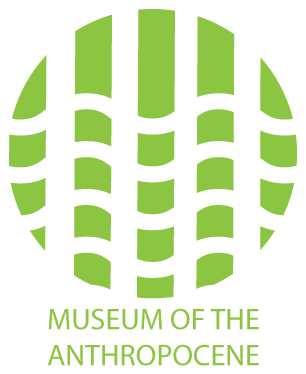The Museum of the Anthropocene (MoA) is an outdoor, city-wide museum that explores the intersection of history, science, and art through Indianapolis's built environment.
The concept of the Anthropocene—that humans are now among the major global forces transforming the earth’s biophysical systems—was first popularized by Nobel Prize recipient Paul Crutzen in the early 2000’s. It has increasingly become a framework through which scientists, social scientists, humanists, artists, and policy makers alike understand our contemporary environment. And, with coverage in the Smithsonian, Scientific American, National Geographic and other mainstream magazines, it’s an idea that’s rapidly entering the public consciousness. While the date when humanity entered the Anthropocene is still a matter of debate, there is little doubt that the period between 1800 and the present has been crucial in forging the conditions of the Anthropocene. This is the period in which industrialization, urbanization, and capitalism reshaped humanity’s relationship to the environment, sparking a massive influx of C, P, and N into ecological systems; climate change; rising sea levels; destruction of biodiversity, and more.
MoA uses the landscape of Indianapolis as an exhibit space to elucidate the history of the Anthropocene as well as the environmental processes that have been reshaped by anthropogenic action. Indianapolis was founded in the early 19th century and grew into a major Midwest industrial, commercial, and transportation hub. Consequently, its landscape suffered from the largely unintended and unanticipated consequences of the city's development, e.g., shifting land use patterns, point and nonpoint pollution, siltation, habitat loss, and decline of native species. By the last third of the 20th century, due to an expansion of scientific knowledge, the shift to postindustrial economies, and a growing environmental movement based on popularized ecology, Indianapolis’s inhabitants began to imagine the urban environment differently. Attitudes and expectations shifted, resulting in new ecosystems, cultural perceptions, ecological priorities, and policies. As such, Indianapolis is a microcosm of the Anthropocene -- revealing the complex interplay of biophysical and human systems.
MoA will be composed of a network of interactive sites, which will be held together through a schema that focuses on both historical and scientific knowledge. The sites will pay particular attention toproviding large scale interpretations that allow visitors to situate themselves within social, environmental, political, and cultural processes as well as to giving voice to diverse contemporary and historical experiences through the integration of oral histories. Each site will consist of an analogue interpretive mechanism (e.g. signs, images, etc.) as well as a digital mechanism that allows visitors to use their mobile phones to play recordings that help them experience the site. The museum will be connected to a digital infrastructure consisting of interactive maps and other activities.



